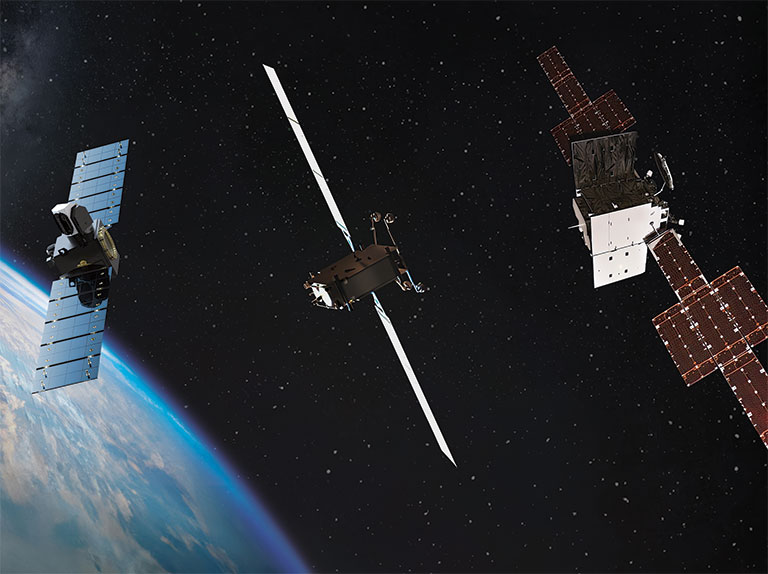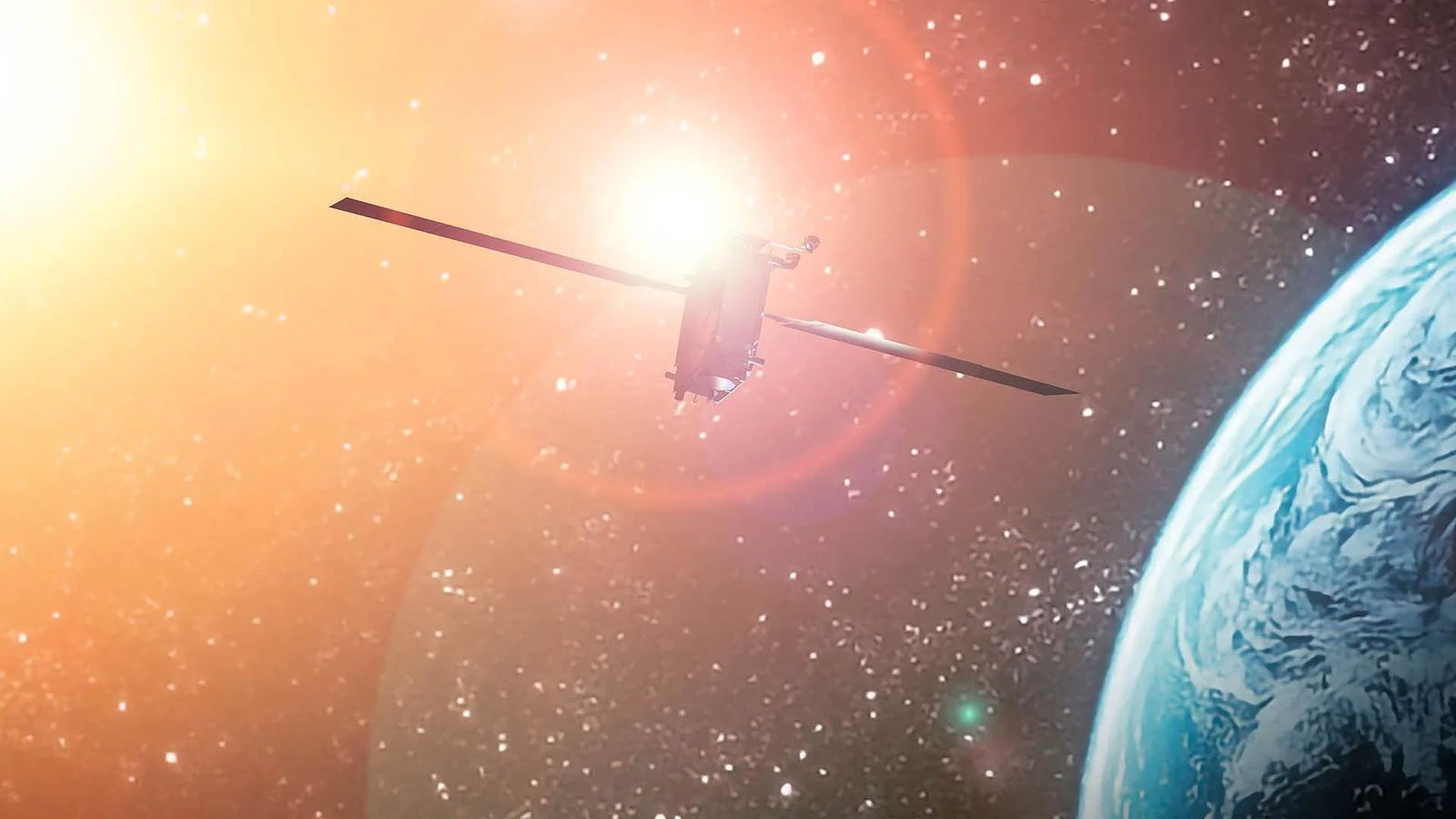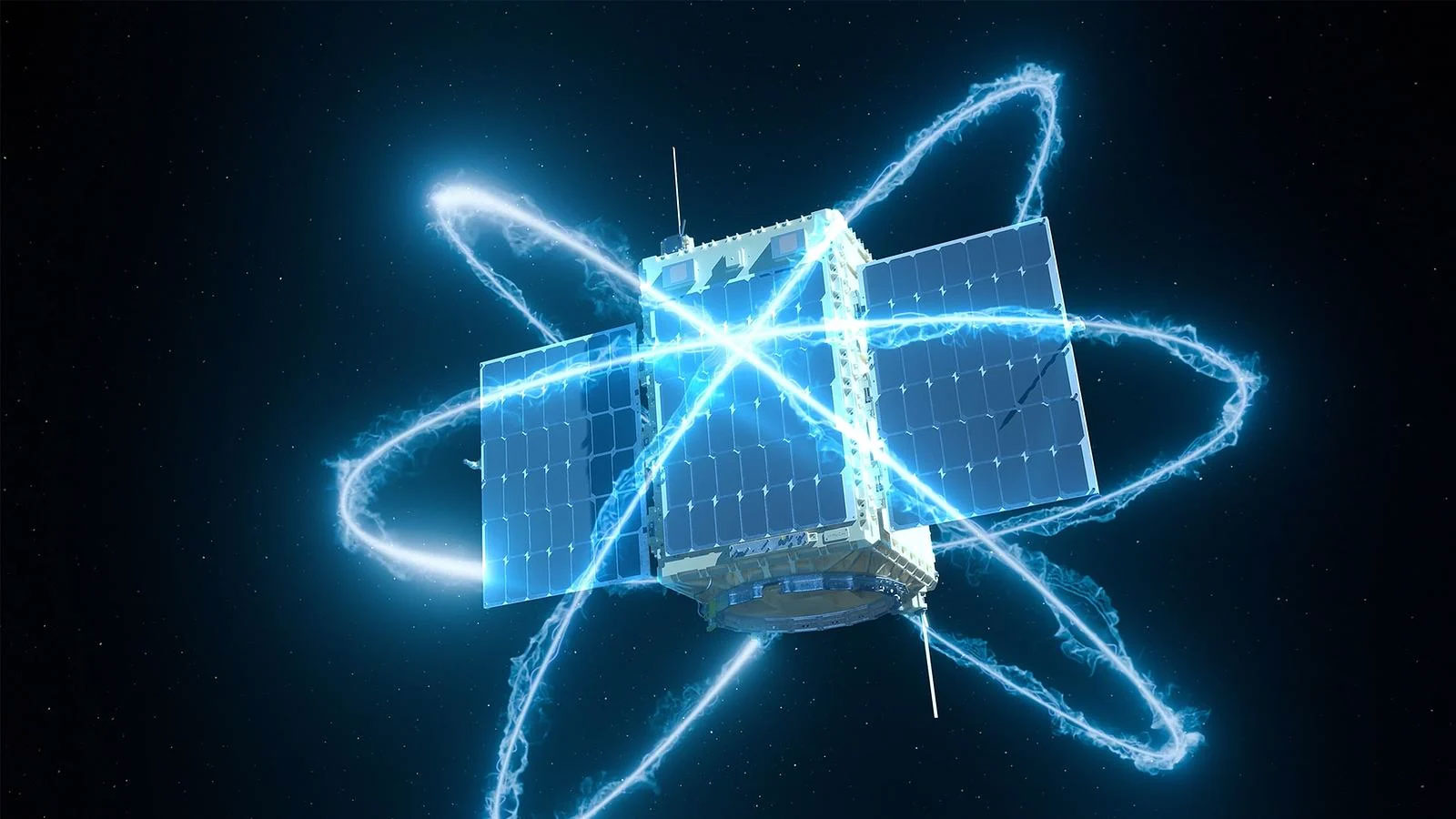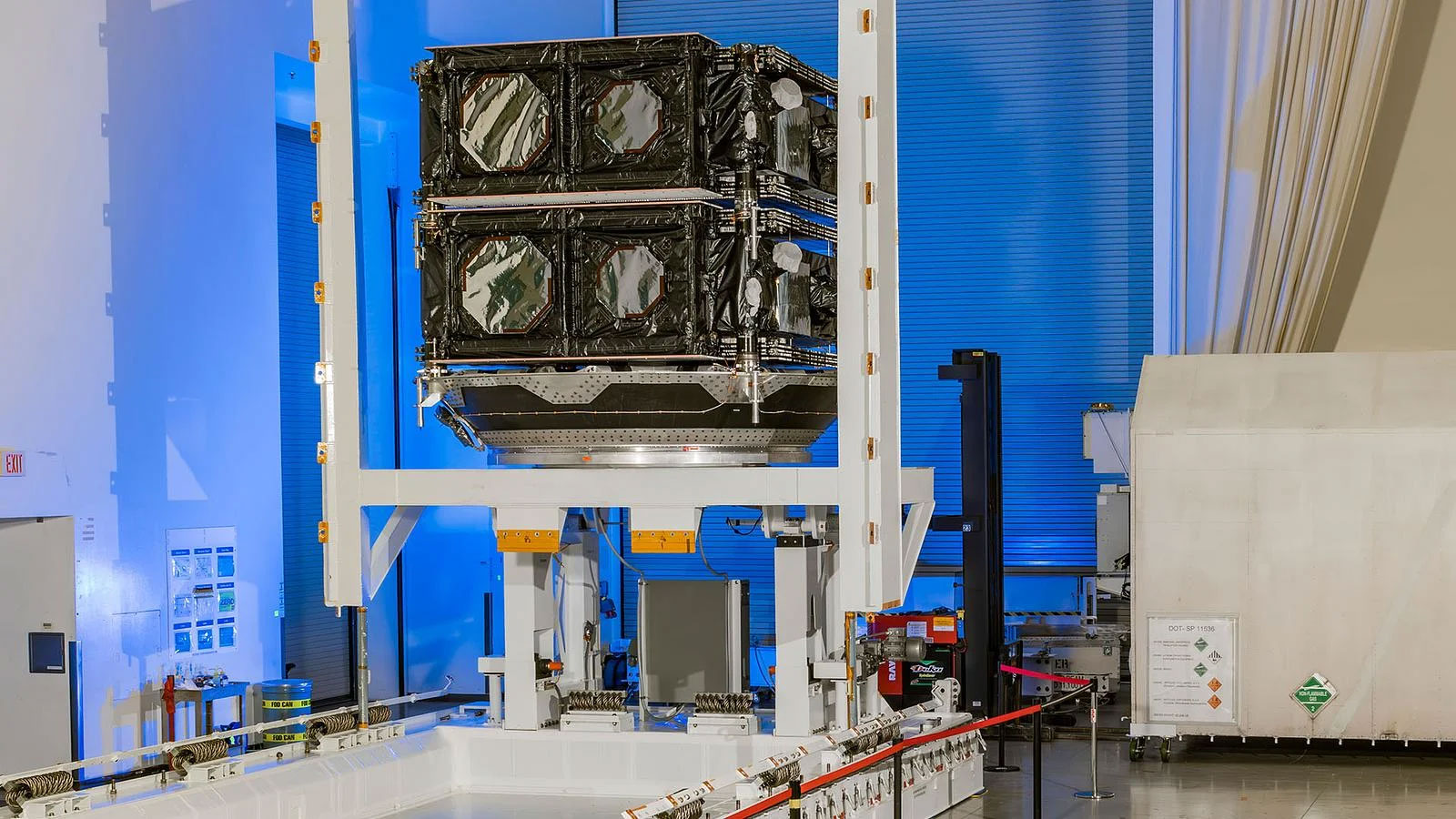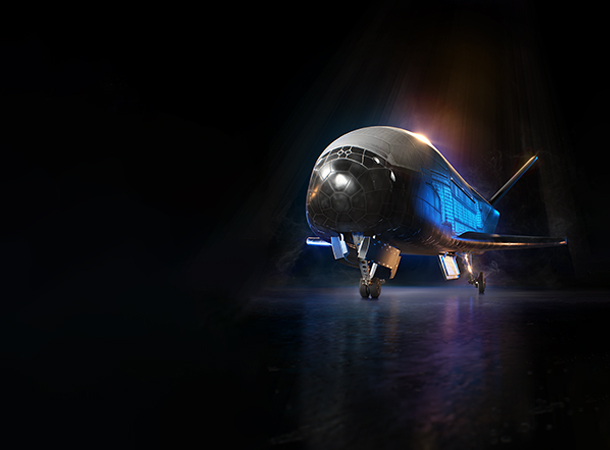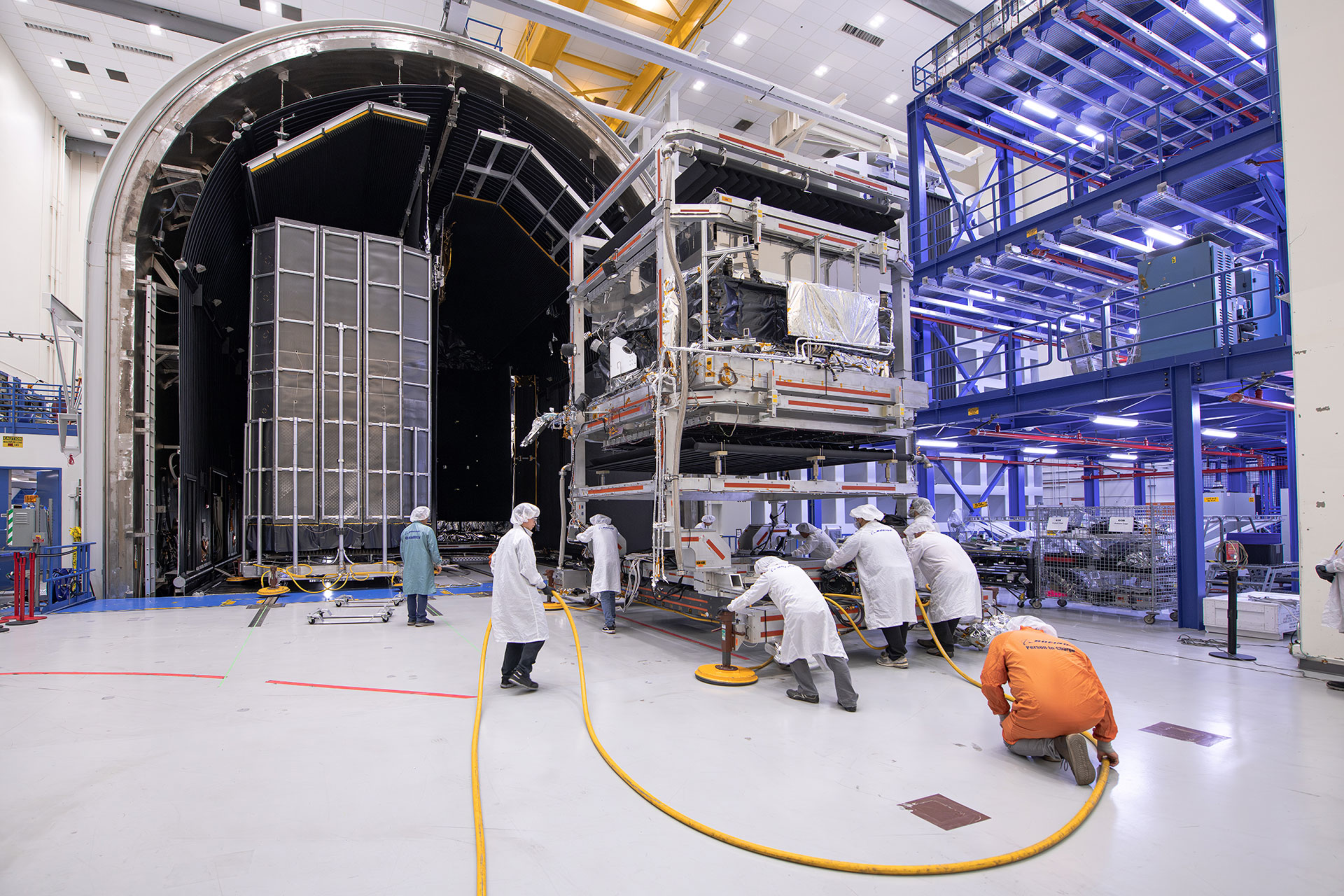Boeing delivers satellites and services that enable your mission — any orbit, from rapid small-sat constellations to high-assurance GEO platforms. Our end-to-end approach spans spacecraft, software-defined payloads proven on orbit, ground architecture, operations and life cycle services. The result: schedule confidence, adaptable capacity and mission resilience. Backed by Boeing’s enduring heritage and investments, we accelerate time-to-benefit while reducing integration risk so operators can scale capability, pivot to demand, and stay connected when it matters most.
From LEO to GEO: Faster, smarter, resilient
Programs, Services and Markets
Programs
Mission-ready platforms and payloads — built for resilience, tailored to your timeline.
Advanced MILSATCOM
Protected, resilient communications architectures designed for global reach and contested environments. Boeing integrates next-gen payloads, anti-jam features and modern ground infrastructure to enhance availability and throughput for joint and allied forces.
Rapid constellations
Through Millennium Space Systems, we design and deliver agile small-sat constellations with compressed schedules, scalable production and integrated tasking — accelerating time-to-orbit and time-to-value for national security and commercial missions.
Commercial SATCOM
Software-defined, flexible payloads with dynamic bandwidth allocation and beamforming provide adaptable capacity and lower life cycle cost. Proven on orbit, our platforms enable operators to evolve services without hardware swaps.
Experimental and prototype programs
Our Experimental Systems Group and Phantom Works Space advance tech across autonomy, advanced payloads and resilient architectures — de-risking future capabilities with flight-proven experimentation.
Ground architecture and integration
Open, modular ground systems enable multi-orbit integration, automation and rapid reconfiguration. Boeing’s advanced ground architecture reduces operator workload and accelerates response in dynamic conditions.
National security programs
Purpose-built capabilities for the most critical missions. We deliver with schedule credibility and operational availability at scale, backed by proven execution and disciplined program management. The outcome is trusted performance when it matters most, with solutions tailored to mission needs and ready to grow as demands evolve.
Services
Satellite communications services
End-to-end SATCOM services — planning, provisioning, optimization and managed operations — built to deliver availability, secure commanding and cost-effective capacity. We help operators scale service quality while simplifying complexity.
Operations and sustainment
From network operations centers to on-orbit support, our teams provide life cycle services, anomaly resolution, performance analytics and upgrades. The focus: keep missions online, secure and performing to plan.
Markets
Government and national security
Resilient communications, ISR-enabling payloads and rapid space capabilities to support the joint force. Built for contested environments with emphasis on survivability, protected connectivity and assured operations.
Commercial operators
Flexible capacity, software-defined upgrades and lower cost-per-bit. Adapt beams and bandwidth in software, extend service life, and align capacity with evolving demand.
News
Customers
Our heritage — Decades of delivery, built for what’s next
With more than six decades of experience supporting government and commercial missions across more than 20 countries — on orbit and on the ground — our heritage brings hard-won domain expertise that now powers modern, software defined architectures, agile constellations and streamlined operations. Our team knows the mission and moves at today’s pace: credible, adaptable and ready to scale.
| Australia | Japan | Sweden |
| Bermuda | Luxembourg | Thailand |
| Brazil | Malaysia | United Arab Emirates |
| Canada | Mexico | United Kingdom |
| France | Netherlands | United States |
| Indonesia | Norway | |
| Israel | Singapore |
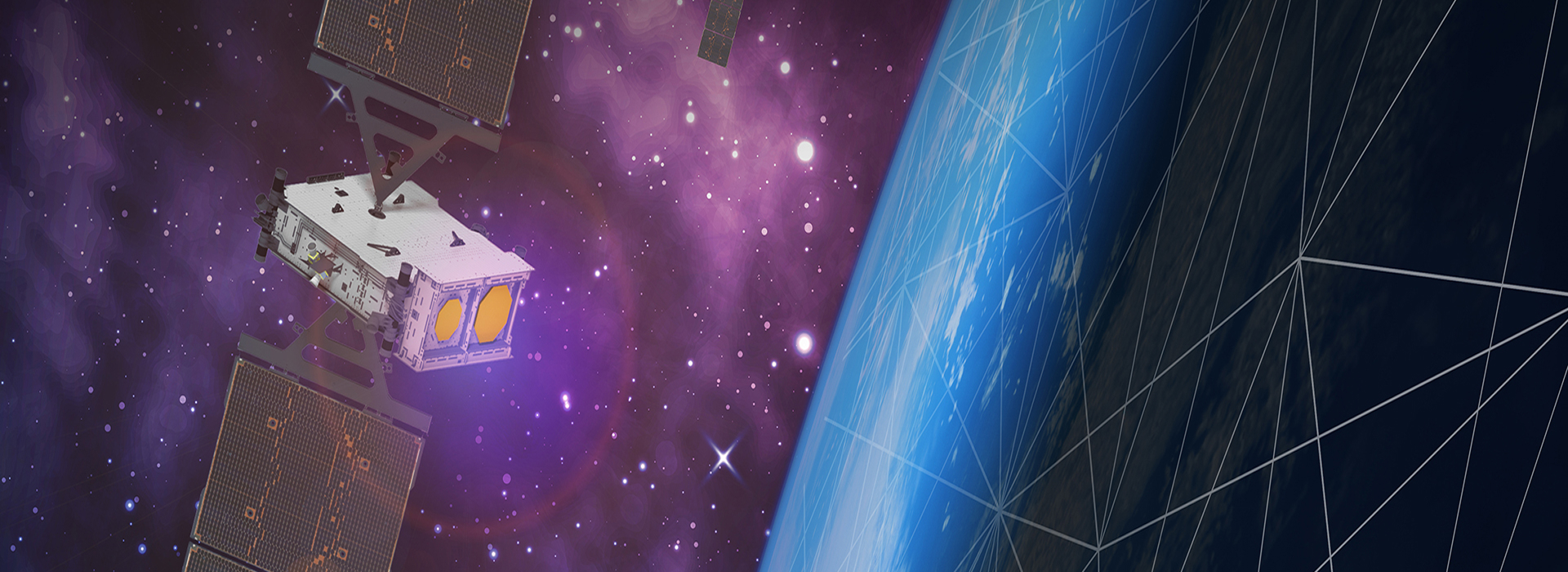
Background
A family of capability — Subsidiaries powered by Boeing
A continuum of space capability — from agile small sats to high-assurance GEO — plus the ground, ops and services to sustain them.
Millennium Space Systems
Agile constellations and end-to-end missions delivered on compressed timelines for national security and commercial customers.
Spectrolab
Industry-leading space solar cells and panels powering iconic programs, from deep space exploration to the most demanding national security missions.

